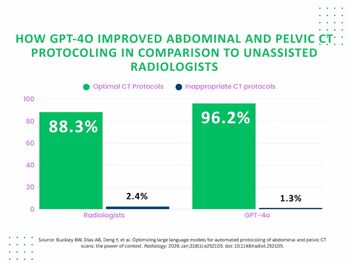
Glazer calls 'invisible radiologist' to task, encourages molecular understanding
A smorgasbord of challenges face radiology but few present a greater threat than the “invisible radiologist,” said Dr. Gary Glazer, chairman of the Stanford University radiology department, who kicked off the 11th International Symposium on Multidetector-Row CT.
A smorgasbord of challenges face radiology but few present a greater threat than the “invisible radiologist,” said Dr. Gary Glazer, chairman of the Stanford University radiology department, who kicked off the 11th International Symposium on Multidetector-Row CT.
Glazer flashed a four-year-old New York Times story on the screen, an anecdote of a woman who waited weeks to learn the results of a CT scan. The suspicious lesion was noncancerous, but the experience was a nightmare. The story crystallized concerns by Glazer about the invisibility of the radiologist.
“It is quite clear, in a high percentage, as high as 90%, that the patient never speaks with the physician interpreting the scan,” Glazer said. “There has been a huge amount of work undertaken over the last decade at improving efficiency of workflow and developing ideal workstations – but these sorts of questions have all related to the life of the radiologist. The patient has been nowhere in this consideration.”
This must change in the years to come, he said. “If healthcare is to improve, the interaction of radiologist and patients must be optimized,” Glazer said.
Among the other challenges and, by extension, opportunities for radiology is for CT to push the boundaries of biology not so much for diagnostic as therapeutic purposes. Glazer said CT has a role to play in personalized medicine, particularly in helping physicians tailor drug therapy to improve outcomes and reduce costs by focusing on those that are effective. This will be done by moving backwards from the image to the molecular underpinnings of disease by correlating what is seen in radiology to genomics, he said.
Newsletter
Stay at the forefront of radiology with the Diagnostic Imaging newsletter, delivering the latest news, clinical insights, and imaging advancements for today’s radiologists.




























